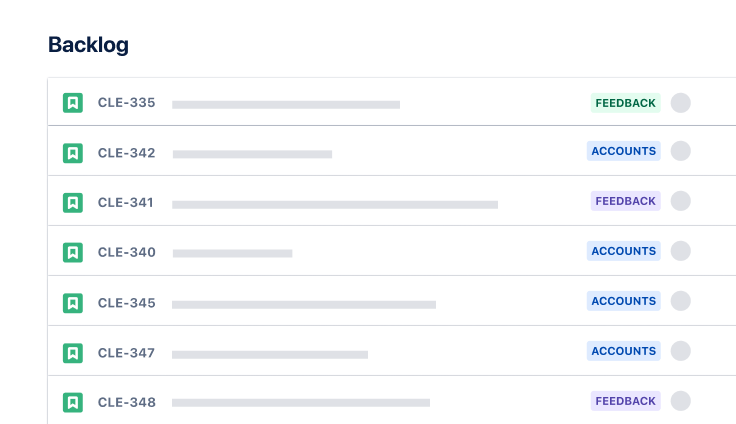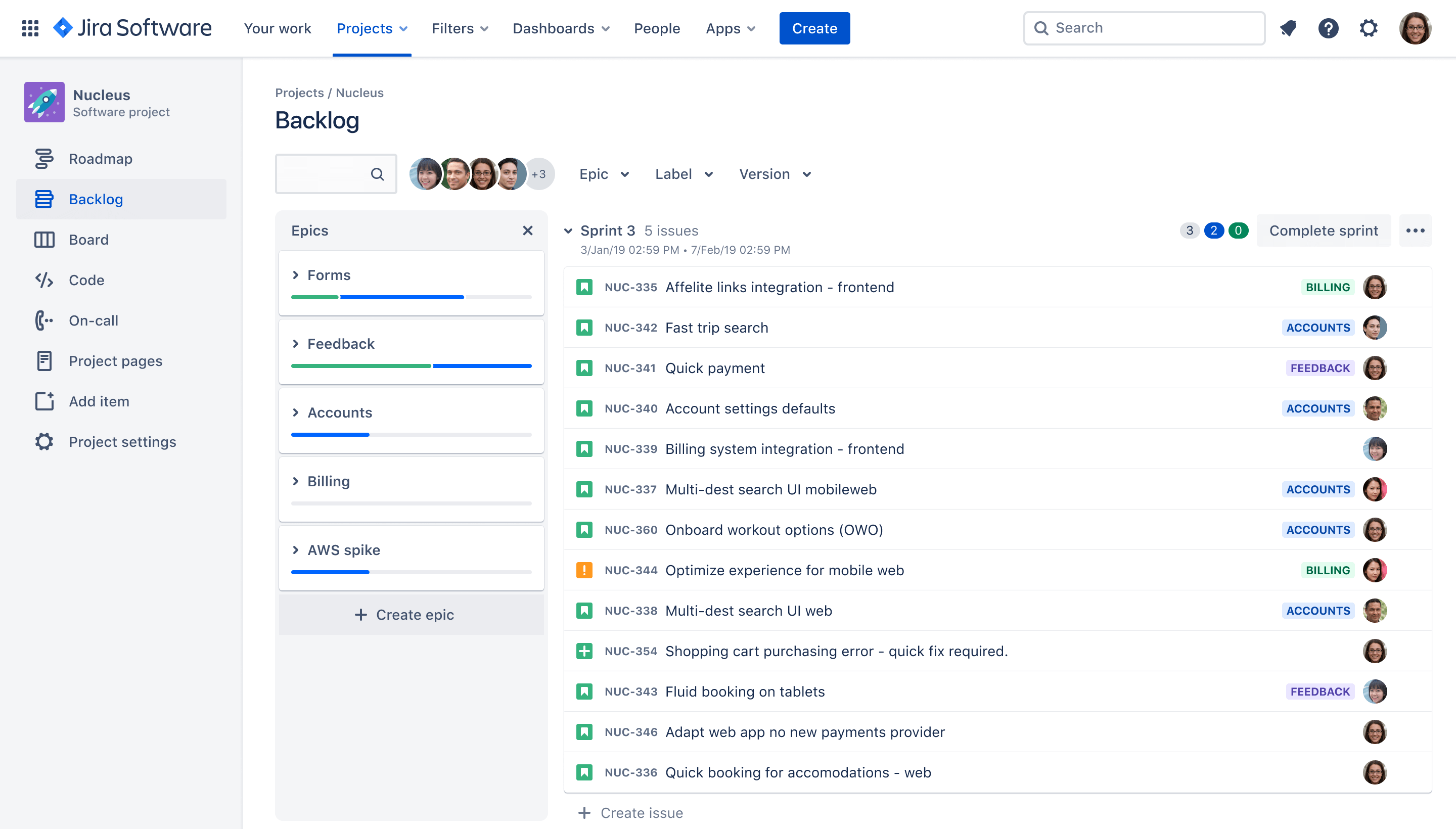
Scrum backlog template
The Scrum backlog template helps Agile teams organize and prioritize tasks, improving time estimates and enhancing understanding of dependencies and blockers.
het beste geschikt voor
Projectmanagement
Softwareontwikkeling
Belangrijkste functies
Taakplanning
Prioritering
Pipelinebeheer
What is a scrum backlog template?
Improved organization
The scrum backlog template in Jira Software provides agile teams with a systematic and reusable approach for organizing the overall project and the focused work in each sprint. It helps capture all necessary features and supporting information, such as user stories and requirements, in a consistent, structured, and centralized manner.
Prioritized list of tasks
Prioritizing and estimating tasks is simple with the Scrum backlog template. Agile teams can quickly move high-priority tasks to the top, identify dependencies, and spot potential roadblocks. Reprioritization is simple, and dependencies automatically move to provide a clear picture of the work.
Wat omvat de sjabloon voor scrum-backlog?
Productbacklog
The scrum product backlog template includes all the work for a project, including product backlogs and sprints. Projects often have multiple product backlogs for different focus areas, such as new features, user experience, or product optimization. Teams identify and prioritize tasks within each product backlog. The work begins once they incorporate them into Scrum sprints.
Teams can include relevant information, such as specifications, user stories, and value. Prioritize items on the product backlogs based on business value and project goals. This allows teams to achieve greater efficiency when creating the sprint backlog, also known as an iteration.
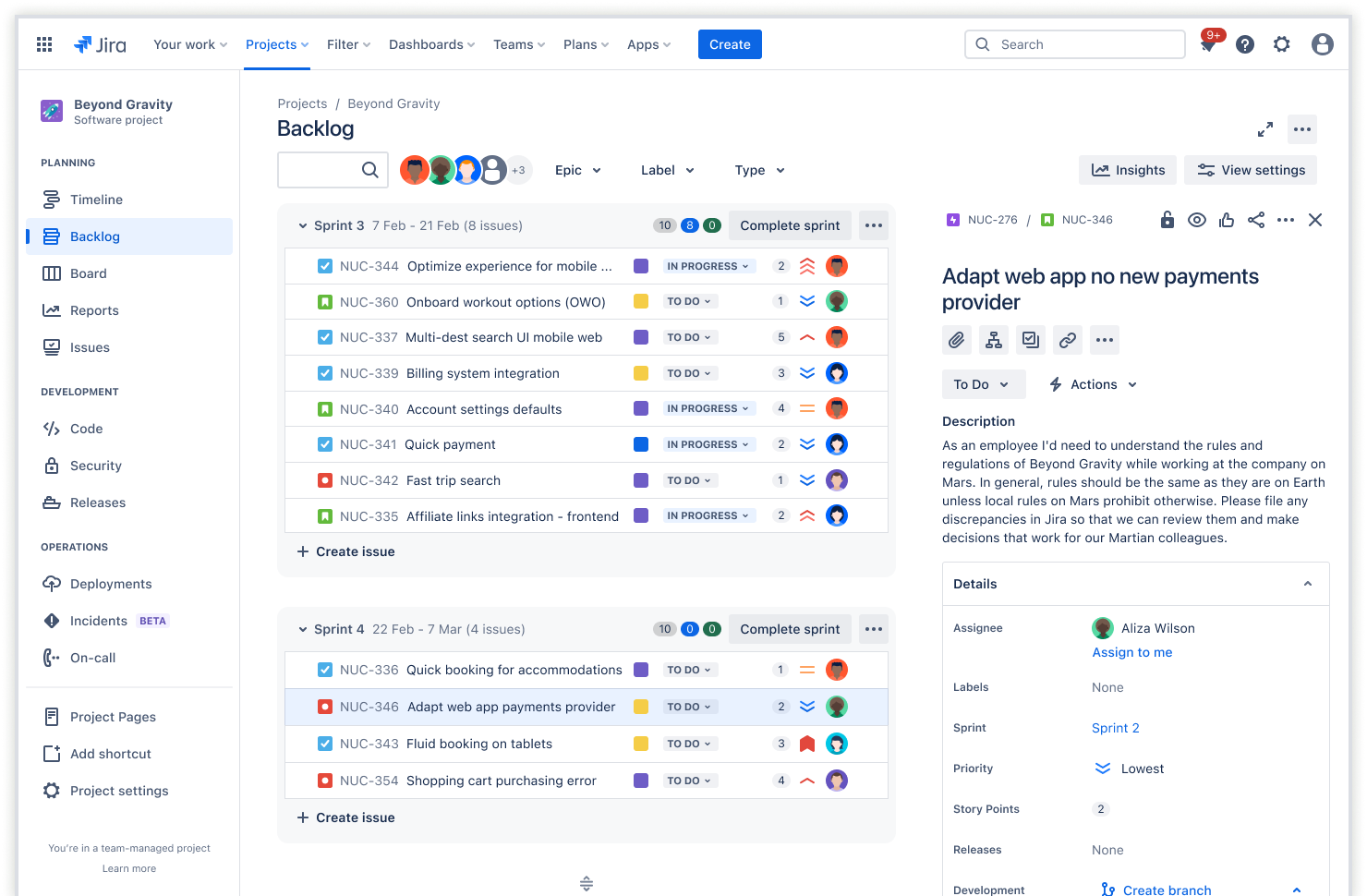
Sprintbacklog
Sprints are focused sets of tasks that deliver an incremental result. Many teams also identify sprints with milestones. The scrum sprint backlog template includes sprint planning.
De sprintbacklog is een subset van de productbacklog en bestaat uit taken waar teams aan werken of van plan zijn binnenkort aan te werken. Door de sprint op te splitsen in kleinere taken, kunnen teams de sprint sneller voltooien en mogelijke blockers identificeren.
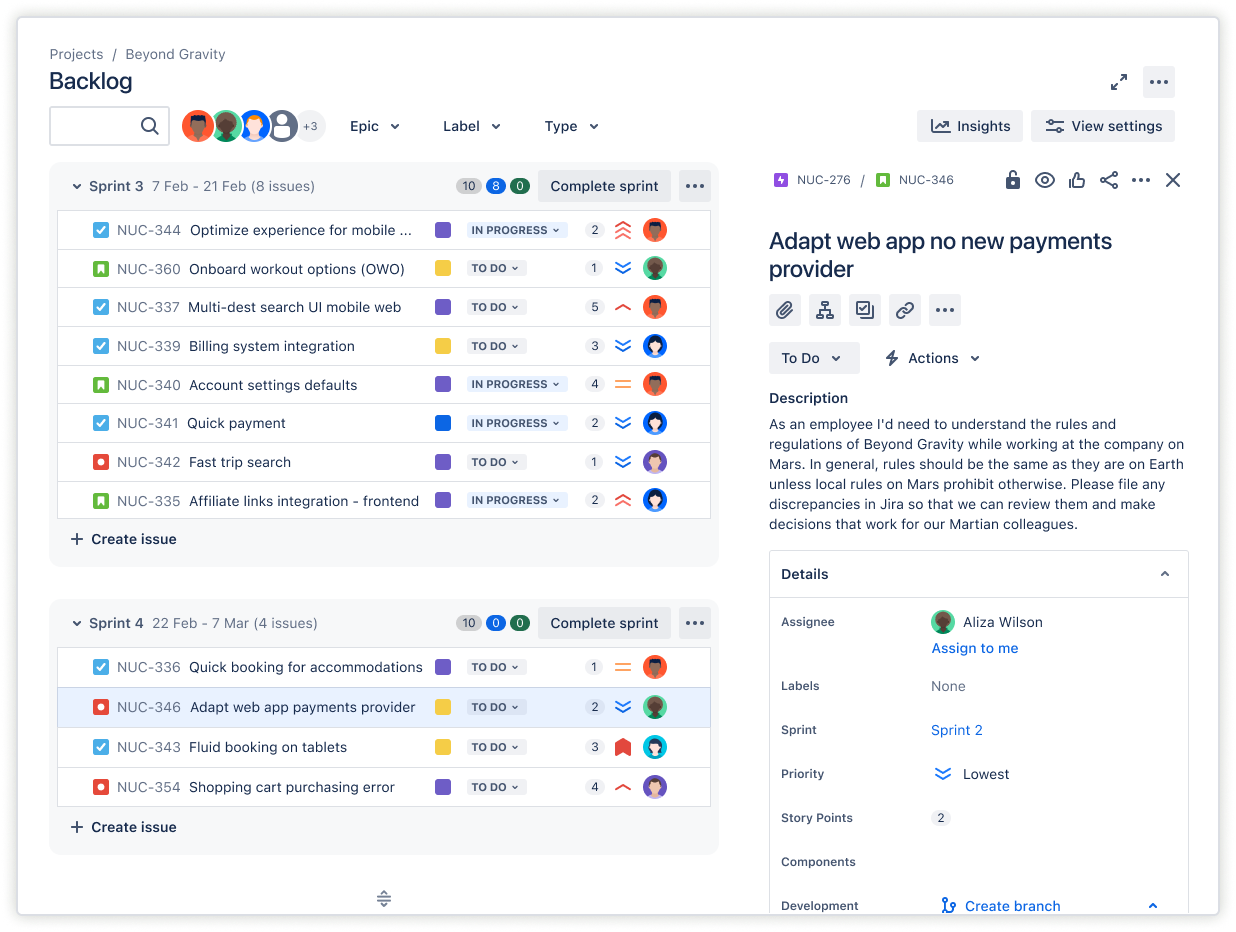
Tijdlijnweergave
Een tijdlijnweergave helpt teams en belanghebbenden op de hoogte te blijven van de voortgang van aankomende deadlines en gerelateerde taken. Door epics toe te voegen en werkitems in kaart te brengen, krijg je een duidelijk inzicht in de afhankelijkheden en hoe de taken bij elkaar passen. Een gecentraliseerde, interactieve weergave maakt het makkelijker om conflicten, dubbele taken, beperkte middelen en andere mogelijke obstakels te zien.

Scrumborden
Scrum boards transform tasks into manageable visual representations of the entire project. A visual presentation helps Agile teams recognize large, complex depictions of work and break them down into smaller, more manageable tasks. This helps eliminate surprises, keeps the team focused on the sprint, and ultimately ship faster.
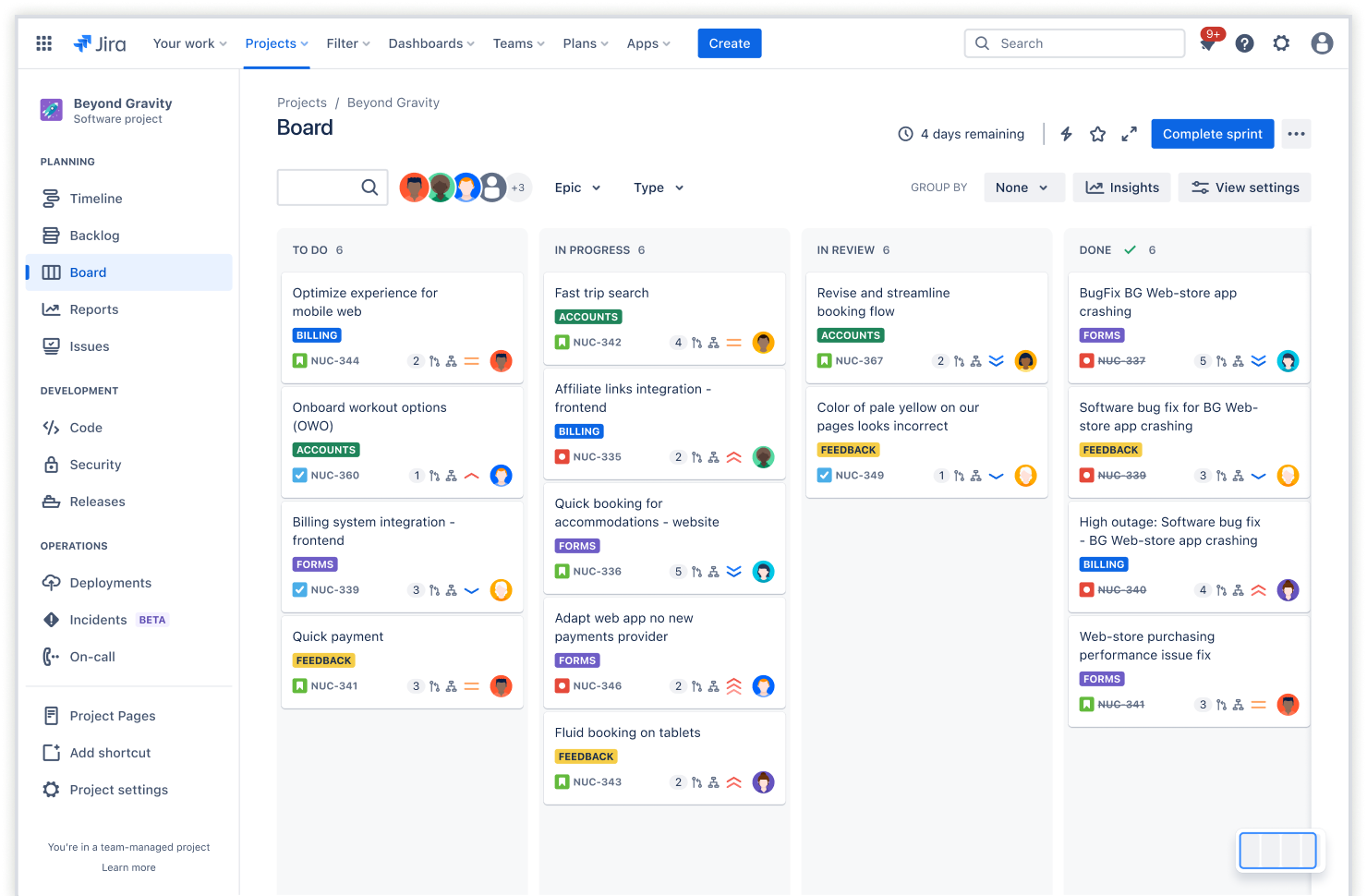
Aan de slag met de sjabloon voor scrum-backlog
Bij deze sjabloon wordt gebruikgemaakt van Jira om je team sneller door sprints heen te helpen.
